Henry Fox Talbot: Exhibition pays homage to photography pioneer
- Published
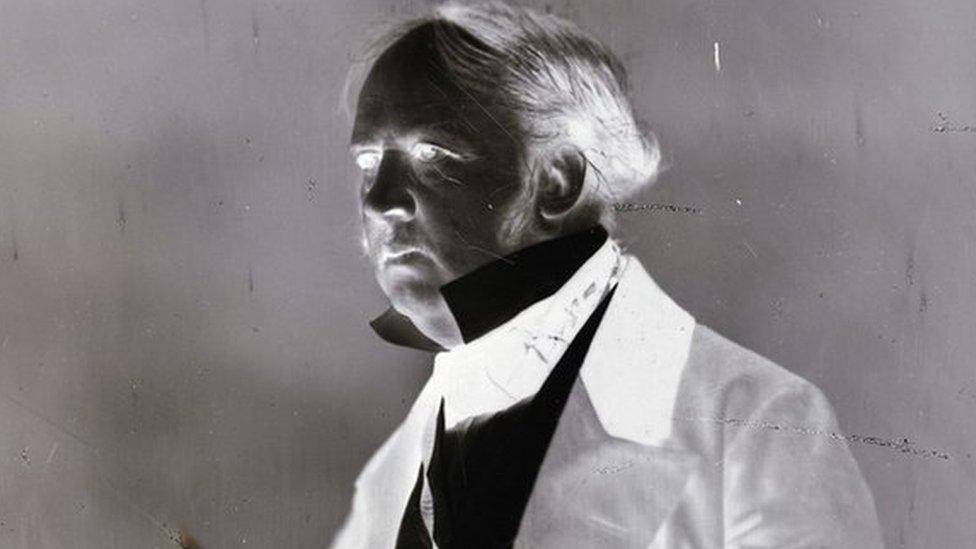
The Victorian inventor of the photographic negative, Henry Fox Talbot
The contribution played by Victorian photography pioneer Henry Fox Talbot will be showcased in a new exhibition. BBC News has taken a look at the impact of his work in creating the world's first negative and how it inspired artists for generations to come.
Ever since the 1830s, when Mr Fox Talbot was experimenting with his technique, the medium has been continually developed towards the digital processes used today.
The new exhibition is paying homage to Mr Fox Talbot by displaying the work of an internationally-renowned photographic artist who has spent her career furthering his legacy.
Ellen Carey's work is being shown in the apt surroundings of Lacock Abbey, Wiltshire, Mr Fox Talbot's home in the 19th Century and Britain's birthplace of photography.
Born in 1800, the story of Mr Fox Talbot's discoveries began with creative frustration. Married to Constance Fox Talbot, who was far better at drawing than he was, Mr Fox Talbot sought to create an alternative method of drawing with light whilst ensuring the image lasted forever.
Of scientifically curious mind, his experiments with paper, light sensitive solutions and early cameras led to the development of the first negative.
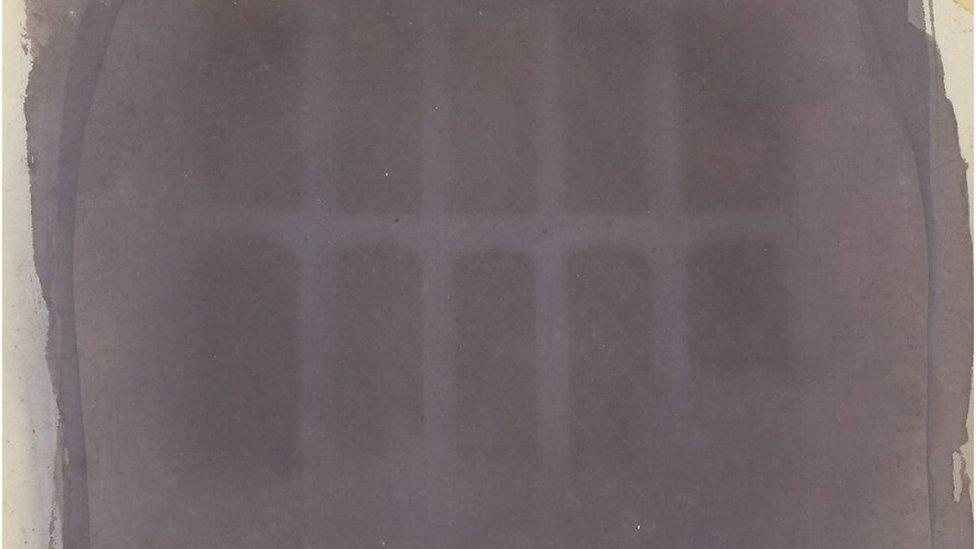
Mr Fox Talbot made what is thought to be the earliest surviving photographic negative
The earliest surviving example is of the Oriel Window at Lacock Abbey; an enigmatic image of a diamond-paned window made in 1835.
To make the image, he brushed a piece of writing paper with salt and silver nitrate and placed it in a small wooden camera stationed on a mantelpiece opposite the window for an exposure that may have lasted hours.
The image is totally reversed as the paper darkened most where it recorded the bright light coming through the window.
This was one of the first and most significant breakthroughs in the discovery of the medium.
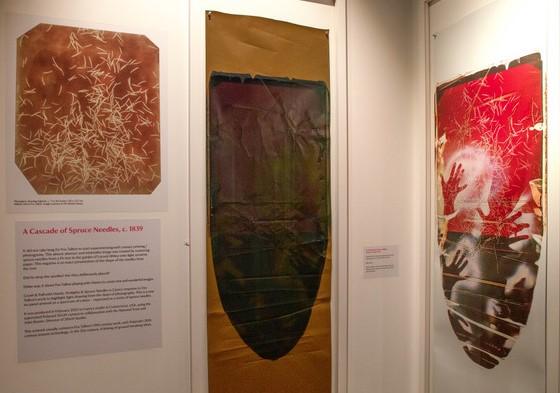
Ms Carey's work is displayed alongside one of Mr Fox Talbot's original negatives (left)
Another of his well-known negatives or photogram's, Cascade of Spruce Needles, inspired Ms Carey to develop her work Crush & Pull with Hands, Penlights & Spruce Needles (2023).
It models the earliest photographic processes, like those of Mr Fox Talbot and his contemporary Louis Daguerre, who was also recording pictures 'drawn by light' in France.
Andy Cochrane, property curator at Lacock Abbey, said: "In the hands of Carey, the negative becomes a significant artwork, as should all negatives.
"Everything we're doing here now at Lacock is a direct result of that moment in time (when Mr Fox Talbot invented the negative).
"It's impossible to go throughout the day without being exposed to an image."
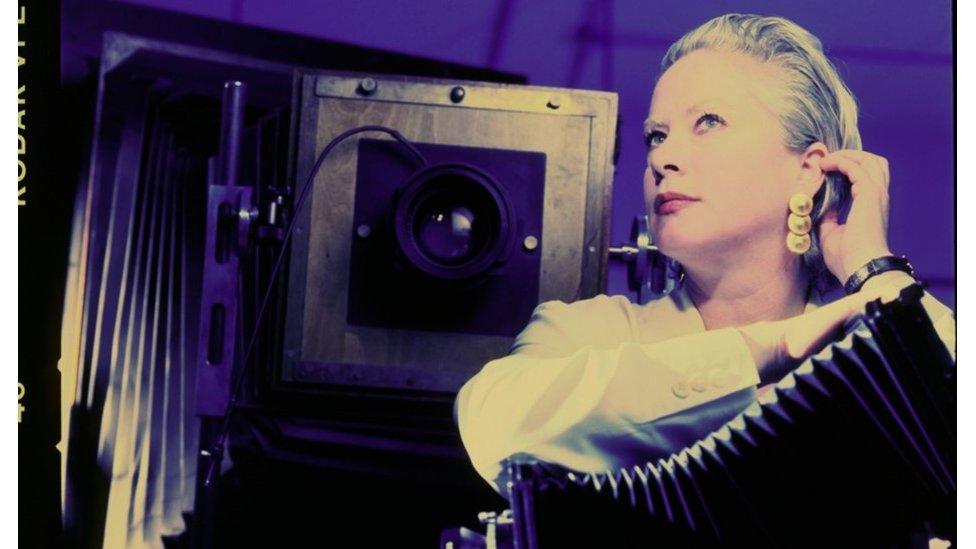
Ellen Carey produced her artwork in a supersized Polaroid 20x24 camera
Ms Carey produced her artwork using a supersized Polaroid 20X24 camera to connect Mr Fox Talbot's 19th Century work with Polaroid's 20th Century instant technology.
Mr Cochrane said: "The exhibition is the beginning of the answer to the question - 'What exactly is photography in the 21st Century?'
"It's increasingly democratic throughout the world, which continues its relevance today."
Mr Fox Talbot was not only a pioneer of photography, but as a keen amateur scientist, he was interested in how his discovery could be utilised more widely.
A concurrent exhibition, Bright Sparks, external at the Bodleian Libraries in Oxford, is displaying for the first time its own significant archive of the inventor, looking at the legacy of his life and work.
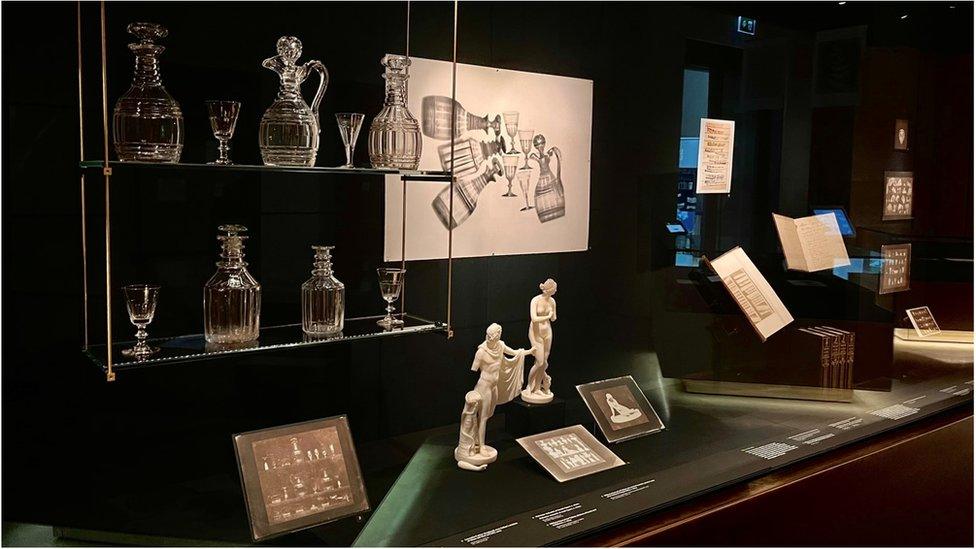
The Bright Spark exhibition includes items which belonged to Mr Fox Talbot
Curator of photography Phillip Roberts said: "It's about how Mr Fox Talbot initiated a lot of ideas that have since been picked up by artists and photographers, and they've taken them to all kinds of strange places with a contemporary eye.
"Mr Fox Talbot was interested in exploring the different potentials this new process could lead to, and each of those different techniques, for example, publishing in books, creating portraits, doing landscapes, recording the shapes of leaves, were significant.
"They're all things that became super important and he had a hand in all of them, which is incredible."
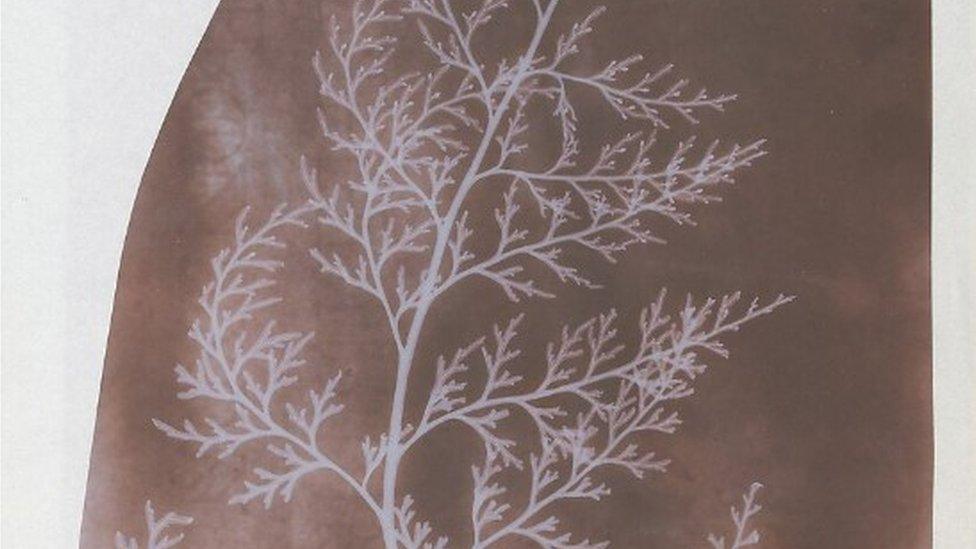
Mr Fox Talbot was an amateur botanist and plants, such as this frond of seaweed, were often the subject of his early photographs
Mr Fox Talbot continued to experiment with the placement of objects in photographs.
"We have a really nice photo of his wife, Constance, looking away from the camera.
"He was playing around with how people should look in a photograph," said Ally McConnell, principal archivist at The Wiltshire & Swindon History Centre (WSHC), which acquired and catalogued the nationally important Lacock Archive, external in 2013.
"Mr Fox Talbot was certainly recognised in his time, but there was probably more of an appreciation for him after his death.
"He actually made a really, really big difference to people's lives and he continues to inspire," she said.
The exhibition opens on Saturday at the Fox Talbot Museum in Lacock Abbey.
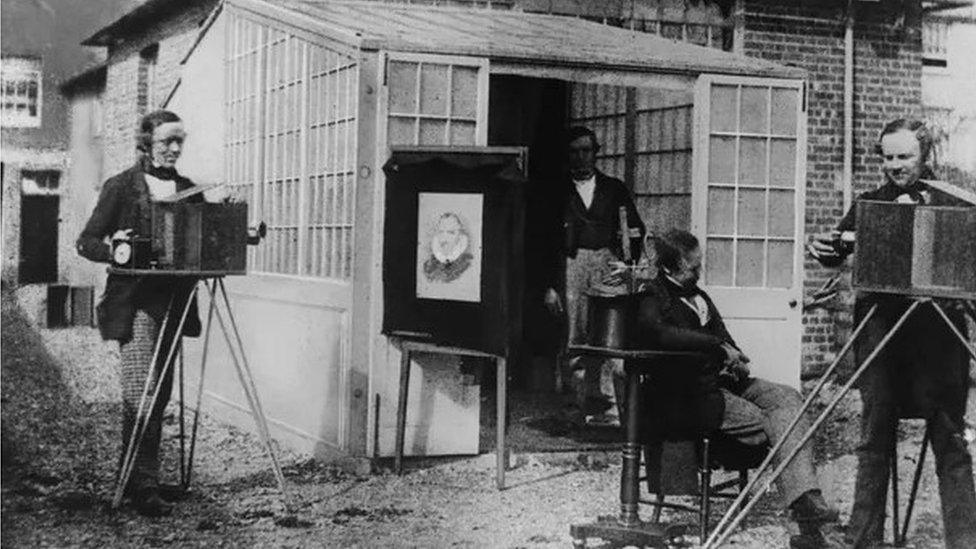
Henry Fox Talbot (right) conducting his photographic experiments in the 19th Century

Follow BBC West on Facebook, external, Twitter, external and Instagram, external. Send your story ideas to: bristol@bbc.co.uk , external
Related topics
- Published11 February 2017
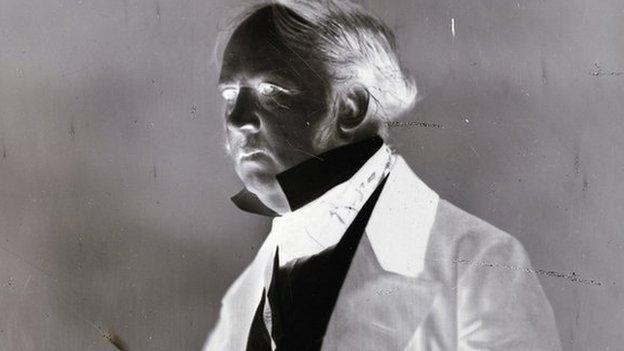
- Published12 November 2016
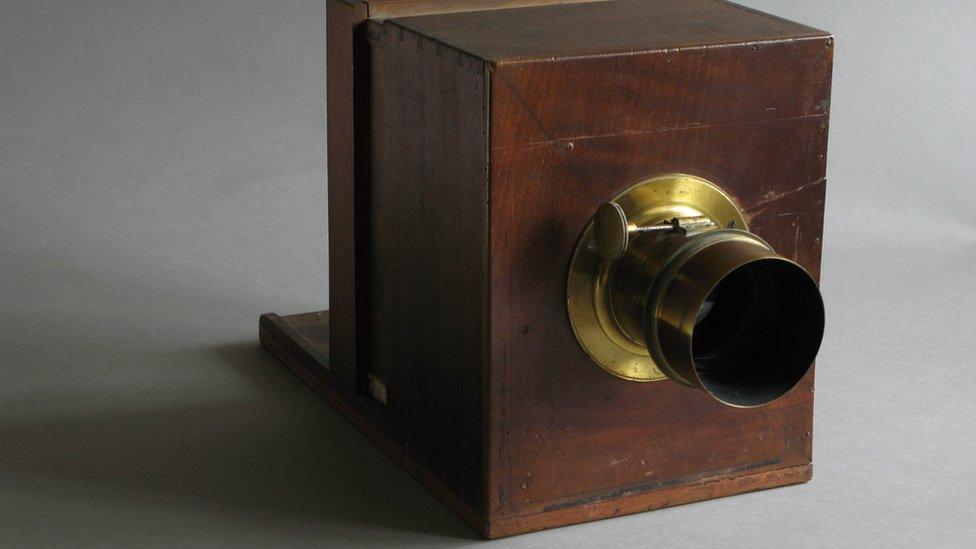
- Published15 May 2015
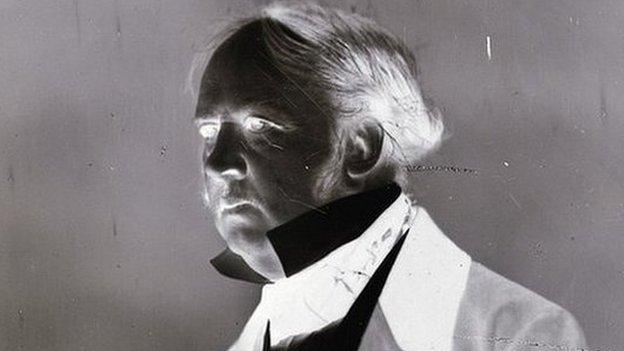
- Published6 October 2014
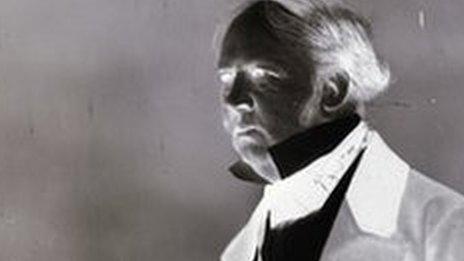
- Published31 July 2013
